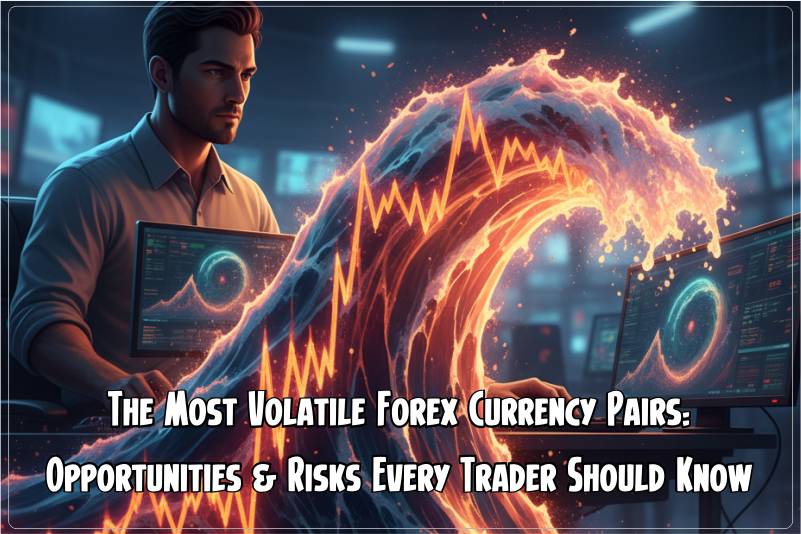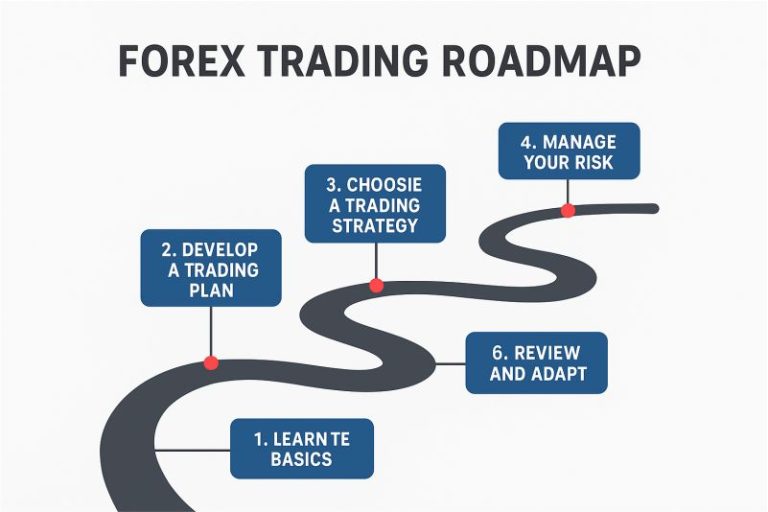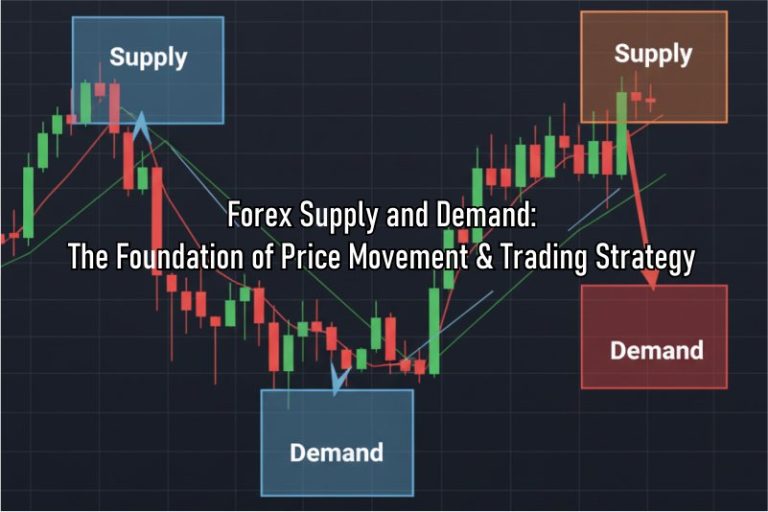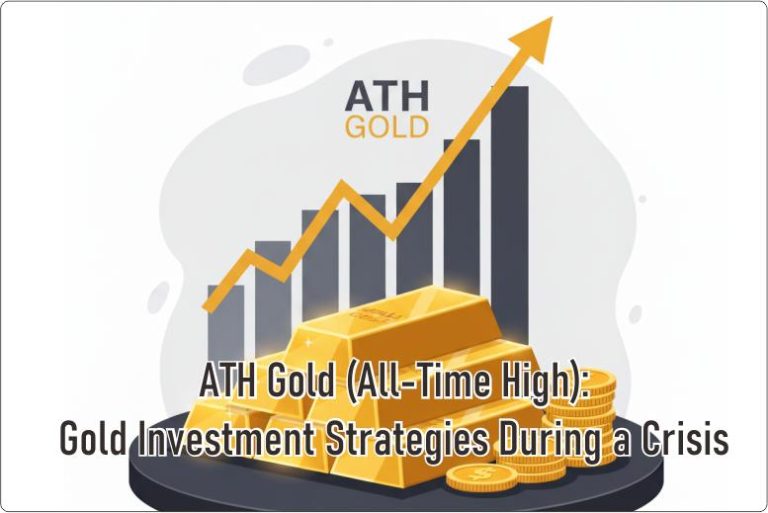
In the world of Forex trading, price movement is the primary source of both profit and loss. For some traders, slow movement offers a sense of security, but for others, large movements or high volatility are a goldmine promising significant gains. Yet, behind the promise of profit lies an equally large amount of risk.
This article will comprehensively explore the ins and outs of the most volatile Forex currency pairs. We’ll analyze what makes them move so wildly, identify the key pairs you should monitor, and most importantly, provide trading strategies and risk management tips to help you navigate these turbulent markets safely.
Understanding Volatility in the Forex Market
Before we dive into the specific list, it’s crucial to have a solid grasp of what volatility is and why it’s a critical factor in trading.
What is Volatility?
Simply put, volatility is a measure of how much and how quickly the price of an asset—in this case, a currency pair—fluctuates over a specific period. High-volatility currency pairs tend to experience rapid and significant Forex price movements, while less-volatile ones move more steadily and within a tight range.
To measure volatility, traders often use a technical indicator like the Average True Range (ATR). The Forex ATR indicator measures the average range of an asset’s movement over a certain period, providing a quantitative snapshot of how much price movement can be expected.
Volatility vs. Volume: Are They the Same?
This is a common misconception. Volatility and volume are two different but related things.
- Volume refers to the total number of transactions that occur.
- Volatility refers to the magnitude of the price movement.
A market with high volume (many transactions) is usually more liquid and has a tighter spread. However, a volatile market doesn’t always have high volume. Often, the most fluctuating currencies are those with low volume, as a few transactions can trigger extreme price swings. This is frequently the case with many exotic currency pairs.
Why Are Some Currency Pairs More Volatile? Key Driving Factors
The volatility of a currency pair doesn’t happen by chance. Several fundamental factors act as key drivers, making them essential for analyzing currency pairs with large movements.
1. Interest Rate Differentials & Monetary Policy
This is one of the most important factors. When there are significant interest rate differences between two central banks, or when one central bank is about to make a major announcement (e.g., the Fed’s FOMC meeting), large Forex price movements often occur. Expectations and outcomes from these decisions can cause massive inflows or outflows of a currency.
2. Geopolitical News & Events
Political events like general elections, military tensions, trade wars, or government instability can cause a drastic shift in market sentiment, triggering unexpected volatility. A currency’s value can plummet or soar in minutes in response to this kind of news.
3. Correlation with Commodities
Some currencies are called “commodity currencies” because their value is closely tied to the prices of key commodities. For example, the Canadian Dollar (CAD) is linked to oil, while the Australian Dollar (AUD) and New Zealand Dollar (NZD) are linked to metals and agricultural goods. Fluctuations in these commodity prices will directly affect the value of the related currency, causing volatility.
4. Trading Sessions & Liquidity
Major currency pairs like EUR/USD have very high liquidity and are traded almost 24 hours. However, cross pairs or exotics have lower liquidity outside their main trading hours. Large movements often occur when the London and New York markets overlap, as that’s when trading volume is at its highest.
A List of the Most Volatile Forex Currency Pairs
Here are some of the most volatile Forex currency pairs that are often targeted by aggressive traders.
1. GBP/JPY (“The Beast”)
Known by the nickname “The Beast” among traders, this pair is one of the most volatile in the market.
- Reason for Volatility: It’s a combination of a Pound Sterling that’s sensitive to UK economic news and a Japanese Yen that is often used as a safe-haven currency. The interest rate differential between the Bank of England and the Bank of Japan is often significant, triggering extreme movements.
- Characteristics: It has a very high ATR, often exceeding 150-200 pips per day. This pair is not recommended for beginners due to its wild movements.
2. Japanese Yen Cross Currency Pairs (Yen Crosses)
Besides GBP/JPY, other Yen cross pairs also have high volatility.
- EUR/JPY: Its volatility is slightly lower than GBP/JPY but still significant. It’s influenced by Eurozone economic data and global risk sentiment.
- AUD/JPY & NZD/JPY: These pairs are considered “risk-on” or “risk-off.” When market sentiment is positive (risk-on), traders tend to sell the Yen and buy commodity currencies like AUD or NZD, causing these pairs to surge. Conversely, during negative sentiment (risk-off), they plummet.
3. GBP/CAD & GBP/AUD
Pairs involving the Pound Sterling and commodity currencies are also very volatile.
- Reason for Volatility: Movements are driven by UK economic data (Brexit, inflation) and fluctuations in commodity prices (oil for CAD, gold and iron ore for AUD).
4. Exotic Currency Pairs
These pairs involve one major currency and one currency from an emerging market, such as USD/TRY (US Dollar/Turkish Lira), USD/ZAR (US Dollar/South African Rand), or USD/MXN (US Dollar/Mexican Peso).
- Reason for Volatility: Very low liquidity, local political instability, and huge interest rate differentials. Price movements in these pairs can be extremely erratic, often accompanied by significant slippage.
Opportunities & Trading Strategies for Volatile Pairs
Trading volatile pairs offers incredible profit potential, especially for short-term strategies.
Strategies for High Volatility
- Scalping & Day Trading: These strategies aim to profit from small, frequent price movements throughout the day. High volatility is the ideal environment for scalpers and day traders as there are numerous opportunities to enter and exit the market quickly. However, strict risk management is absolutely essential.
- Breakout Trading: This strategy focuses on price movements that break through significant support or resistance levels. Currency pairs with large movements often experience strong breakouts, providing clear trading signals.
Measuring Volatility with Indicators
To capitalize on these opportunities, you need to know when volatility is likely to increase. In addition to economic news, use indicators like the Average True Range (ATR). The ATR will show you the average pip movement of a pair over a specific period. If the ATR value increases, it signals that volatility is rising.
The Risks to Be Aware Of & Risk Management Tips
While the most volatile Forex pairs offer opportunities, they also carry much greater risk. Ignoring these risks is financial suicide.
Major Risks of Trading Volatile Pairs
- Slippage: This is the difference between the price you expected for an order and the actual price at which it was executed. In a volatile market, slippage can be significant.
- Wider Spreads: When the market becomes turbulent, liquidity can dry up, causing the spread (the difference between the bid and ask price) to widen significantly. This will increase your transaction costs.
- Stop Loss Hit: Your stop loss can be “blown through” or skipped by the price, especially during a sudden price spike.
Effective Risk Management
Risk management is not an option; it’s a necessity when trading volatile pairs.
- Smaller Position Sizes: Reduce your position size when trading volatile pairs to ensure you don’t lose too much capital if the market moves against you.
- Wider Stop Loss: Because of the wild price swings, set your stop loss a bit further away to avoid being taken out by insignificant price movements.
- Use a Trailing Stop: This is a great tool to lock in profits. A trailing stop will follow the price as it moves in your favor, but stay in place if the price reverses, securing your gains.
- Monitor Economic News: Never trade volatile pairs around major news releases without being prepared.
- Understand the Psychology: Forex trading risks aren’t just financial; they’re psychological, too. Don’t let emotions like greed and fear control your trading decisions.
Conclusion: Volatility as a Double-Edged Sword
The most volatile Forex currency pairs are a double-edged sword. On one hand, they offer huge profit opportunities in a short amount of time. On the other hand, they carry an equal risk of loss if not handled correctly.
For disciplined, experienced traders, volatility is an opportunity. But for unprepared beginners, it can be a pitfall of ruin. The key to success is understanding, planning, and implementing strict risk management. Always do your research, understand the factors driving market movements, and never trade with capital you can’t afford to lose.
Have you ever tried trading volatile pairs? Share your experiences in the comments below!



